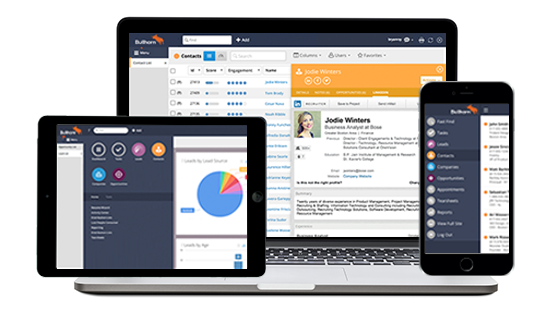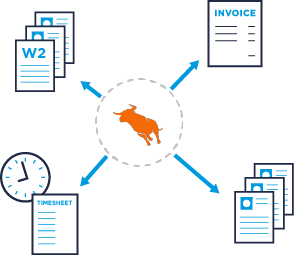Transform Your Human Resources Workflow with Staffing Management Software
Releasing the Power of Data: Enhancing Human Resources Strategies With Cutting-Edge Staffing Management Software Program
By utilizing the power of data analytics, organizations can not only improve their recruitment techniques but likewise maximize employee retention and productivity. The synergy in between data-driven understandings and progressed modern technology presents an engaging chance for HR professionals to revolutionize their method towards skill administration.
Importance of Data-Driven HR Methods
Why have data-driven human resources approaches end up being essential in modern business procedures? In today's fast-paced and affordable organization atmosphere, companies are progressively relying on data-driven understandings to make enlightened decisions. Data-driven human resources techniques make it possible for firms to maximize their workforce monitoring, recruitment processes, and worker involvement initiatives. By analyzing information connected to staff member efficiency, turn over prices, and skill gaps, human resources departments can identify patterns, forecast future needs, and establish proactive solutions to attend to difficulties.
Data-driven HR strategies likewise play a critical function in improving worker complete satisfaction and retention. Through the analysis of worker responses, efficiency reviews, and training outcomes, HR specialists can customize private growth strategies, identify high-potential staff members, and foster a culture of continual learning and development within the organization. Furthermore, data-driven insights make it possible for HR groups to align their approaches with the general service objectives, making certain that ability management initiatives directly contribute to business success.
Benefits of Staffing Administration Software Application
Using staffing monitoring software application improves the recruitment and onboarding processes for HR divisions, improving efficiency and precision in ability procurement. One substantial benefit of this software application is the capability to centralize candidate information, making it easily accessible for recruitment teams. By having all candidate details in one area, HR experts can effectively track candidate development, communicate efficiently with potential hires, and make certain a seamless employment experience.
Moreover, staffing management software typically includes features such as resume analyzing and key phrase matching, which help in rapidly recognizing top candidates that match the work demands. This automation decreases the time invested on manual return to screening, allowing human resources staff to concentrate on even more calculated jobs. staffing management software. Furthermore, these systems can integrate with task boards and social networks platforms, expanding the reach of task postings and attracting a varied pool of candidates
Additionally, analytics and reporting tools within staffing administration software give useful insights into recruitment metrics, such as time-to-fill and cost-per-hire. This data-driven strategy enables HR groups to make educated choices, enhance recruitment techniques, and improve overall working with procedures. By leveraging these advantages, companies can simplify their talent acquisition initiatives, improve prospect experience, and ultimately build a strong workforce.
Enhancing Recruitment Procedures With Information
Employing data-driven strategies in employment processes has actually ended up being significantly crucial for organizations looking for to improve their ability procurement results. By leveraging information, firms can make even more informed decisions throughout the employment lifecycle, ultimately resulting in much better hires and boosted retention rates. One crucial way information enhances employment processes is by maximizing work posts based upon insights from previous successful hires. Evaluating metrics such as the resource of leading ability, time to fill positions, and candidate quality can help employers customize task descriptions to draw in the right prospects efficiently.
Furthermore, information analytics can simplify the testing and selection process by determining patterns in prospect helpful site qualifications and performance signs. This enables recruiters to focus their initiatives on prospects who are probably to succeed in the function, saving time and resources. Furthermore, data-driven recruitment approaches can help decrease bias in the working with procedure by giving objective understandings right into candidate qualifications and possible fit within the organization. Overall, integrating data right into recruitment processes empowers organizations to make smarter employing choices and develop high-performing groups.
Improving Employee Retention Through Technology

One means modern technology can boost worker retention is with the usage of employee engagement platforms. These platforms enable for real-time comments, recognition, and communication in between staff members and monitoring, promoting a society of recognition and support. Furthermore, modern technology can allow personalized discovering and growth programs customized to individual employee requirements and occupation ambitions, raising job contentment and loyalty.
In addition, information analytics tools can aid organizations recognize patterns and trends associated to staff member turnover, enabling them to take aggressive actions to deal with possible concerns before they rise. On the whole, by leveraging technology properly, organizations can develop a much more helpful and interesting job setting that urges workers to grow and remain within the business.
Taking Full Advantage Of Labor Force Efficiency With Information

With the analysis of information, human resources departments can identify patterns and fads that influence productivity degrees. By tracking worker job hours and task completion prices, organizations can optimize work timetables to make certain that tasks are effectively dispersed amongst group members. Additionally, data can expose ability voids within the labor force, enabling human resources to carry out targeted training programs that improve employee her latest blog capabilities and general performance.
Additionally, data-driven performance evaluations enable managers to supply certain responses and assistance to workers, promoting a society of continual improvement. In general, leveraging information to maximize labor force performance is a critical strategy that equips companies to attain their goals efficiently and efficiently.
Verdict
To conclude, making use of sophisticated staffing administration software program can considerably improve human resources strategies by leveraging the power of data. By integrating data-driven employment procedures, boosting staff member retention via technology, and maximizing labor force productivity, organizations can streamline their operations, make even more educated choices, and inevitably attain better success in managing their human funding. Accepting these technological innovations is critical in the ever-evolving landscape of human source administration.
Data-driven Human resources approaches make it possible for firms to maximize their labor force management, employment processes, and worker interaction efforts. By examining data connected to worker performance, turnover rates, and skill gaps, Human resources divisions can recognize fads, predict future needs, and create proactive remedies to resolve challenges.
